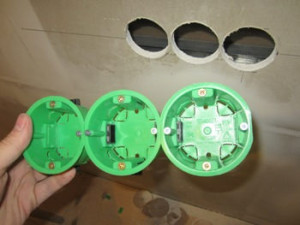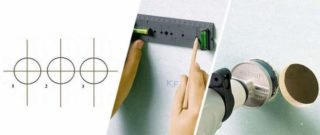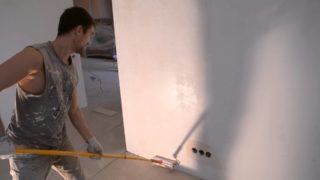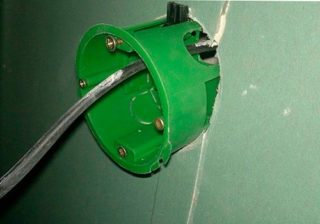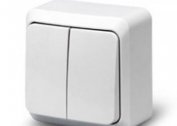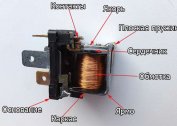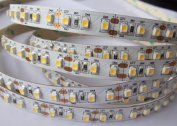The method of wall cladding with drywall panels is extremely popular. In this regard, the technology for wiring and its accessories has changed. You need to know how to install a sockets for drywall, as well as its dimensions, models and range of installations for electrical elements.
Features of plasterboards for drywall
For leveling the surface of structures and arranging interior partitions, inexpensive and easy-to-use drywall is used. The work is carried out on a frame made of a metal profile 50 mm wide. Therefore, between the drywall and the wall there is free space for wiring. Plasterboard is flammable material. Therefore, according to the PUE, wiring is performed in non-combustible pipes or a cable that does not support combustion.
For the installation of hidden wiring, the installation of an electrical appliance on hollow walls, special socket boxes are used for GCR. They are also called mounting or installation boxes. The fixture is a kind of gasket between the main wall and the device. The design allows you to reliably fix the socket and switch, buttons, dimmer or motion sensor in the hollow wall.
The socket box is an indispensable element when installing electrical equipment. It must comply with fire safety standards. Without the socket, the mount will become loose during operation, the drywall will deform over time, and the outlet may fall out.
Shapes and designs
Devices may have a round, square or rectangular shape in various colors. More commonly used round models. They differ in diameter and landing depth. When heated, heat is given to drywall, which is important in the event of a short circuit. They can be used with a current of maximum 16A and voltage up to 400 volts.
Main characteristics:
- The sizes of the undergrowth on drywall vary - the depth of landing is from 40 to 62 mm, the diameter is from 60 to 75 mm. When choosing take into account the thickness of the sheet and the distance between them and the wall.
- For the box to fit tightly, the crown for drilling holes must be of the same diameter.
- Internal diameter max. 65 mm.
- If several elements are installed at once under one frame, the distance between the centers should be maintained within 71 mm.
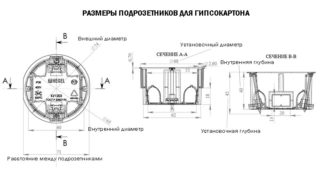 There are products whose sizes differ from generally accepted standards. When choosing a suitable product, you need to correlate the dimensions of the space behind the partition and the depth of the undergrowth.
There are products whose sizes differ from generally accepted standards. When choosing a suitable product, you need to correlate the dimensions of the space behind the partition and the depth of the undergrowth.
They are made of metal or plastic, they are used to fasten the entire structure to drywall. The ideal option is products made of self-extinguishing plastic. On their front part there are 4 fixing screws: a pair for fixing the frame of the outlet, the other two screws are equipped with special presser feet that abut against the back of the sheet.
On the back there is a marking for cable holes. The front part is not quite round. The two opposite sides are as if cut off, which helps to assemble a block of several boxes. If necessary, you can choose a double and triple socket. Special connectors are also available for assembly.
Wall marking and hole preparation
Installation work begins with marking the place for the outlet. To do this, you need a level, tape measure and a pencil. It is necessary to take into account the number of connected consumers, the arrangement of furniture, the overall design of the room.There are no special requirements, there are certain standards that can be followed. It is recommended to adhere to the following distances from the floor:
- to the center of the outlet hole 30 cm;
- to the center of the switch 90 cm;
- for a washing machine one meter;
- for the kitchen table 1m 20 cm;
- no closer than 20 cm to the doorway;
- distance to gas communications is at least 50 cm.
The selected section of the wall is impregnated with a primer. After drying, put a thin layer of putty. This will make the gypsum plasterboard stronger, it will not crumble during operation. Next, markup is performed. Drill a hole on the marked area with a crown. This is a special drill nozzle with sharp teeth along the edge. You can use a conventional drill, and then cut a hole with a construction knife.
In order not to damage the sheet, work is carried out carefully with a slight pressure. It is recommended to pre-drill the central hole of a small diameter, otherwise the crown may lead to the side. The edges of the finished window are processed again, which extends the life of the device.
If the drywall is attached to wooden blocks, or the house itself is wooden, not plastic but metal sockets with a certain level of protection are used.
Installation of a single socket
After preparing the hole, a cable is launched into it and a box is installed. The main stages of installation:
- In the undergrowth, the holes for the wire are cut with a construction knife and brought out.
- Insert the box into the drywall window.
- Check the cable free play so that it does not jam.
- Fix the socket to the wall, checking the horizontal position with a level.
Screw the box to the wall surface tightly with screws. At the same time, the fastening of the mounting tabs should not protrude beyond the limits of the socket. After the box is installed in the desired position, tighten the mounting screws until the tabs fit to the back of the sheet. In order not to spoil the casing, the fasteners are tightened until resistance appears. Then they make another half turn. Now you can install a socket or switch.
Features of block installation
Installation of several socket boxes in one block has some features. Installation of a group of boxes is performed in the same way. Pre-carry out the processing of drywall putty, put the markings on the wall. The distance between the centers of the sockets should be 71 mm without errors. Then drill the required number of holes. The partition between them is removed with a knife or saw. The cable leads only to the first window.
The design of conventional models provides for their connection due to the protrusions on the box. The GKL block is assembled using special connectors. They have a standard diameter. In the first and last box, one side plug is removed, in the other two. The adapter is installed on the seat and snap. A second box is attached to it. Thus, the undergrowths gather in one common line. In the first box, the plug is removed, a supply wire is fed through it. Next, you need to install the assembled unit.
In some cases, the mounting ears do not allow to freely install the structure in the groove. Usually they are somewhat in favor of the diameter of the box. You can try to start it diagonally. Another option is to cut small eyes in drywall on one side.
The main thing is that the size of the hole should not be larger than the outer diameter of the undergrowth. If everything is done correctly, the unit should fall into place without any problems. At the last stage, tighten the mounting screws. This should be done gradually with caution so as not to damage the drywall.
- 1
- 2
- 3
At first glance, installing electrical appliances seems simple. But there are some nuances and difficulties. It is better to purchase sockets and socket boxes at the same time as drywall.So you can correlate the characteristics of materials, models and sizes, mounting methods. Not only the appearance, but also the safe long-term operation depends on how well the work is done.
